Despite some stiff competition El Salvador, due to gang violence, has a reputation as being the most dangerous country in Central America. However, you wouldn’t realise
it from the people that we met making our way from the border to our first destination because they were some of the friendliest we’ve met. As there was no direct service we had to take 3 buses and on our second bus the
whole bus in unison screamed ‘gringos’ at the bus conductor when he forgot to tell us when to disembark, it was as if everybody on the bus had made it their personal duty to make sure that we got to where we needed to
be. A lovely couple even waited for us to get our backpacks so they could walk us to the correct roadside location where we needed to catch the next bus from. After our tenth transportation of the day, a pick-up truck, we
arrived in our final destination of Perquín.
Ruta de Paz
The Salvadorian Civil War was fought between the military-led government backed with $6 billion dollars in financial and military aid from the US against the Farabundo Martí National Liberation Front (FMLN). The FMLN, named after Farabundo Martí who was executed after leading an uprising of indigenous farmers and peasants against a military junta in an attempt to transform Salvadorian society in 1932, formed in 1980 when five guerrilla groups united against the military junta that had overthrown the government in 1979 when it failed to improve living standards as promised. In the twelve years that followed around 75,000 people perished, with the majority being killed by military death squads that were sent to wipe out entire villages believed to be assisting the FMLN efforts and targeted anyone they suspected of supporting social and economic reform.
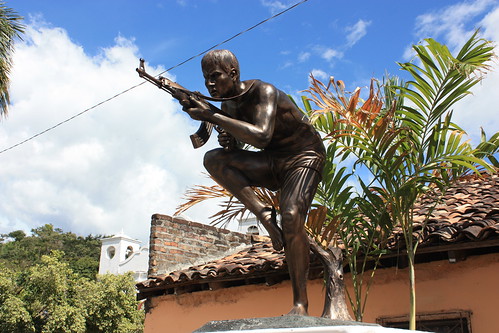
As one of the poorest areas in the country the Morazán department was heavily targeted during the war, and it became a strong hold for the FMLN, but after peace accords
were signed in 1992, all armed FMLN units were demobilized and their organization became a legal political party, and today they hold many political posts including the Presidency and the area around Perquín has become
a living legacy against war.
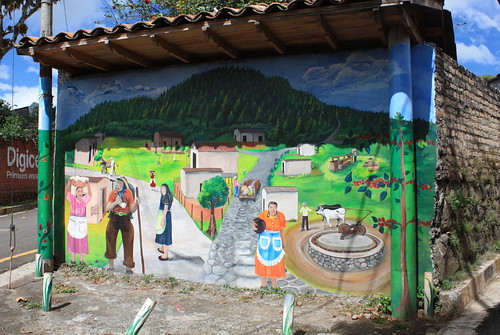
Today the road leading up to Perquín is known as the Route of Peace, where each village seems to have had an atrocity committed against it worse than the last. In a
hope that education will prevent anything like it ever happening again, as well as memorials, statues and placards remembering those that lost their lives, murals depicting the events of the war have been painted on walls and
the lamp posts have been painted by the local children with emblems of peace.

Perquín is home to the Museum of the Revolution, which contains artifacts and exhibits related to the war. Our guide was a former guerrilla who lost 15 family members
during the fighting including his sons. He only spoke Spanish and we realised that our Spanish doesn’t yet cover the words associated with war atrocities but it was a sombre experience none the less and a reminder of the
tragedy and loss of war. The museum also houses one of the bases used by Radio Venceremos, the FMLN radio station that was broadcast throughout the country and rebroadcast via short wave radio throughout the world during the 1980s.
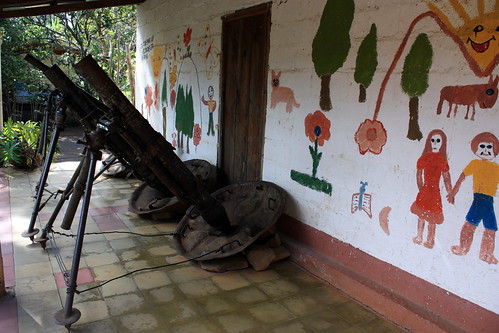
Despite the history, the people of Perquín seemed to have moved on and were very friendly and the region was a good introduction to El Salvador and we looked forward
to seeing more when we returned from our time in Honduras.
San Salvador
From Honduras we were only planning to head just over the border into El Salvador, but when waiting on the highway for a bus to come along thinking we were going to be hopping
on and off chicken buses all day long, the first bus that arrived was a luxury express going directly to the capital, what a treat for us! Having avoided all Central American capitals with the exception of Panama City we decided
that we would go to the most dangerous capital in the region, with at least 10 violent murders a day. El Salvador is a very small country so it’s easy to get about without having to take long bus trips. The journey from
the border took us two thirds of the way down the country in an interesting 90 minutes, weaving our way through the colourfully decorated town of La Palma while getting great views of Suchitlán lake, before driving
through the run down outskirts and then past the historic sights in the capital.
The disparity between between the rich and the poor that lead to the Salvadorian Civil War still exists today, but today the war is between rival maras (gangs) which has lead
to El Salvador being the most dangerous country for homicide rate in the world. Despite this we decided to stay in the capital, and found ourselves a safe neighbourhood to spend a night. The main avenue in the city, Boulevard
de los Heroes, has some of the biggest fast food stores we’ve ever seen and sometimes the same company has another outlet just three doors down. It was also home to one of the largest malls in Central America that we managed
to get lost in. We never felt unsafe here and we could walk about our hotel area at night but we decided to leave the next morning, having only seen the city from the bus, partly because accommodation was quite pricey, even
a bit luxurious for our standards and we wanted to head to our next destination in time for the weekend festivities.
Ruta de las Flores
This is a 36km stretch of road in the west of the country that winds it’s way over hills and through rural villages and is so named because of the explosion of colour caused
by wild flowers blooming in the region each winter.

It was here that we realised that although the subject matter of the murals in Perquín were distinct, the painting of murals is not, making El Salvador one of the most
colourful countries we have visited. It seems that Salvadoreños love to cover any dull space, and not just with brand advertising or political slogans like in other countries. Every street has a painting or mural done
by local artists or children and I think if we’d stood still for long enough they would have painted us too, even baby chicks aren’t allowed to keep their normal colours!
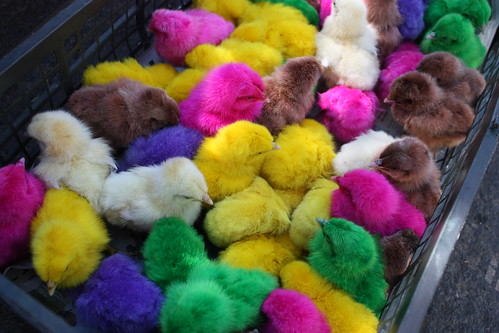
We stayed in the town of Juayúa (pronounced why-you-uh) and explored the other villages by jumping on and off the chicken buses that chug up and down the route.
Juayúa is renowned for its weekend food fair where the local restaurants set up food stalls around the town’s plaza and streets making the biggest food fair in El Salvador, cooking up such local specialities as rabbit,
frog and snake.
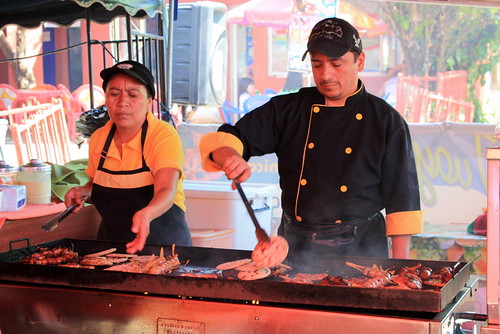
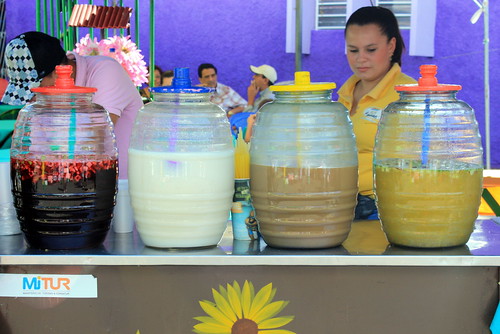
Not quite having the stomach for it, we opted for our latest local culinary addiction, pupusas.
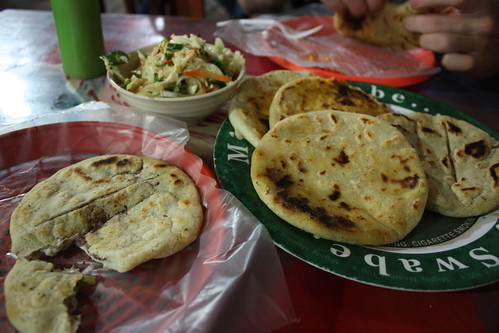
If eating exotic animals isn’t your thing then the weekend is also home to a huge market, where local vendors come from the surrounding villages to sell their wares and,
at this time of year, there is a huge selection of Christmas gifts on offer. Salvadoreños come from all over the country to try and pick up a bargain.
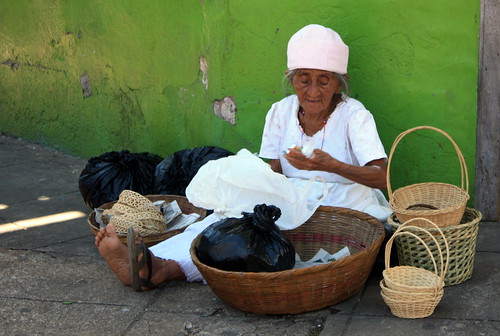
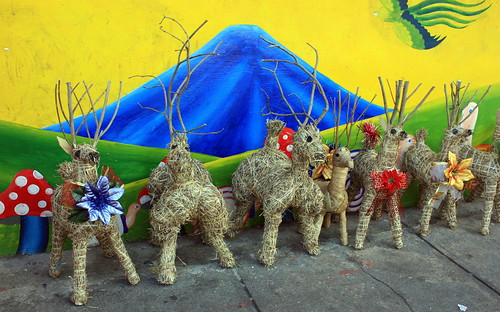
Our accommodation in the Hostel Anaháuc was a perfect example of the love of artistic expression in El Salvador. It was the best hostel that we have stayed in so far
in Central America and one of the best on the trip, even if the funky wall painting gave us psychedelic dreams.
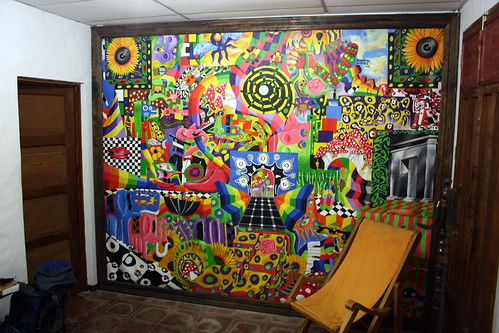
Parque Nacional Los Volcanes
Nearby to the Ruta de las Flores is the Parque Nacional Los Volcanes, so we decided to put our trekking boots on once again and climb one of the volcanoes in the park. We
nearly didn’t make it as the bus kept breaking down, with the driver getting seriously dirty trying to fix it, but he managed to get it to the local mechanics, where after half an hour of welding and doing various flammable
things to the engine inside the bus while we were still on-board, we were able to continue with our journey.
The road leading up to the park was lined with coffee trees bursting full with red coffee beans that were being picked by whole families working together. Inside the park
we grouped together with some other travellers to organise a guide and some guards for our trek. Due to the security situation in the region you can only trek if you have two armed policemen with you to protect you from bandits!
There have been stories in the past of people being robbed here of everything including their clothes while trekking alone.
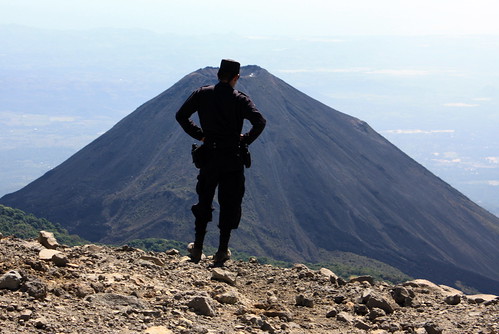
Despite the security situation it is easy to see why people come to Los Volcanes with its three volcanoes dominating the skyline. We decided to climb Llamatepec, also known as
Santa Ana, the tallest volcano in El Salvador. We started our trek on another of the volcanoes Cerro Verde, which as the name suggests was very forested and green, before crossing to Llamatepec, where we became more exposed
to the sun as we followed the rocky path through spiky plants and shrubs.
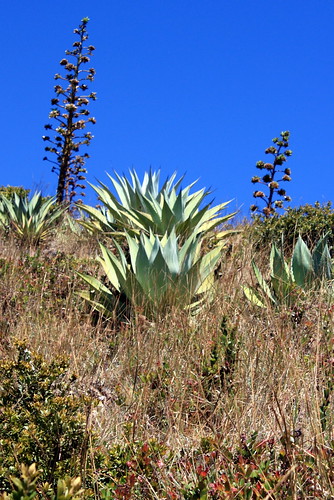
One advantage of getting above the tree line was that the views opened up and as we rose we got to see the whole landscape of El Salvador and across to the Pacific Ocean as
well as being able to see the perfect cone of the other volcano in the park, Izalco.
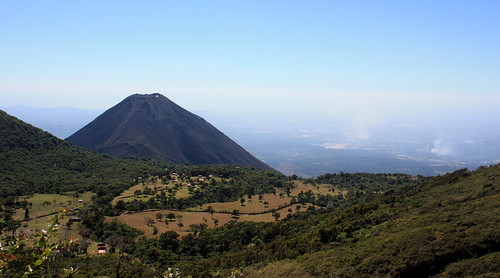
It was a fairly easy trek and the ascent to the summit followed a scree path before flattening out to follow the rim of the caldera with
a great view down into the hot and steaming 300m deep laguna.
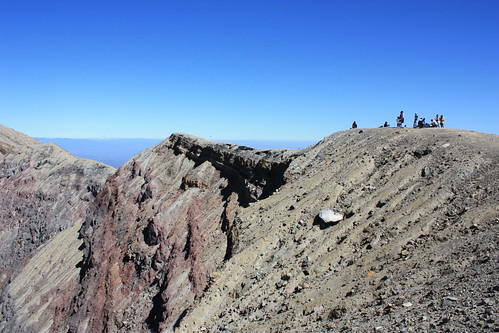
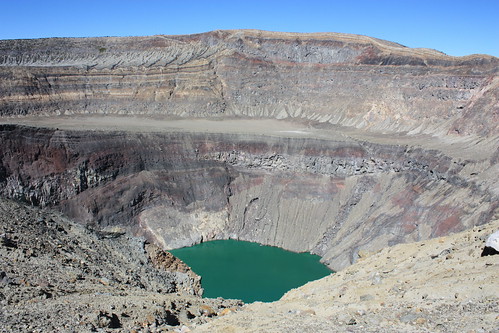
There was also an unexpected and fantastic view of the ancient caldera
lake of Coatepeque. In all it was, as Jo would describe it, a very satisfying
volcano climb.
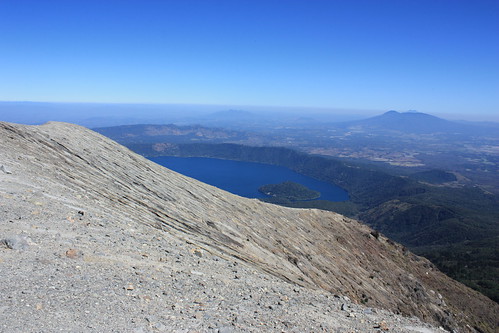
Santa Ana
Our base for the trekking was Santa Ana, El Salvador’s second largest city, and our home was in the Casa Frolaz, another great accommodation set in a beautiful large home
in the suburbs with great facilities and fancy rooms. The owner Javier was literally opening up his home to backpackers, letting us use his kitchen, garden and lounge to relax in. In general, the
accommodation in El Salvador is a little bit more expensive than the rest of the region and there aren’t the numbers of hostels to choose from that more visited countries have, but we loved all of the accommodation that
we stayed in and they were really great value for money.
Santa Ana was quite a large town, but we could walk around quite freely without having to worry about crime, there are even street signs reminding people to leave their guns
at home. The town’s chaotic market sprawled for blocks and blocks and had everything you could possibly need.
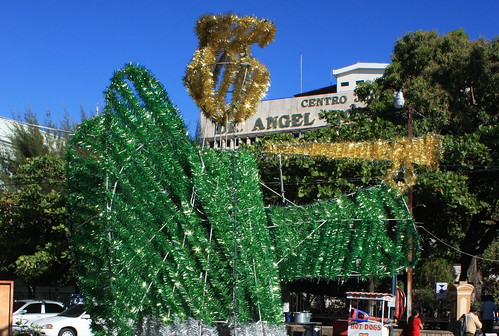
On our last morning in the country we took a walk to the city’s plaza,
which was surrounded by a cathedral, theatre and the usual government buildings that you can find in these places, along with festive Christmas decorations. And, as a last hurrah, we were treated to the best pupusas in the country called Revueltas that are filled with cheese, beans and pork.
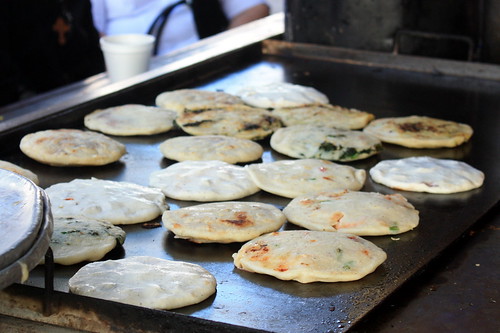
El Salvador Summary
Due to the security situation and because there was nothing that seemed outstanding to see in El Salvador we nearly didn’t come, but we’re really glad that we did. It
is true that the Maras are a problem, but this is also true of many other countries in Central America. If you take the same precautions you do elsewhere then you’re no more likely to run into problems. El Salvador, although
on the rise, is still pretty untouched by tourism, which also made it enjoyable to travel around and despite not knowing much about the country before we arrived, there are definitely some outstanding things to see and the
Salvadoreños themselves are a real highlight.
Highlights
Favourite Place - Juayúa (Jo) Perquín (Ryan)
Favourite Attraction - Parque Nacional Los Volcanes (Both)
Favourite Food - Pupusas (Both)
Favourite Beer - Pilsener (Ryan)
Favourite Drink - Good coffee (Jo)
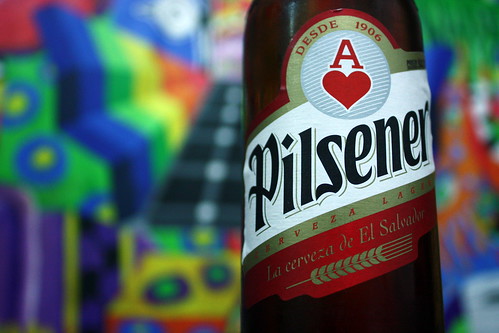
Lowlights
Saying goodbye to pupusas!
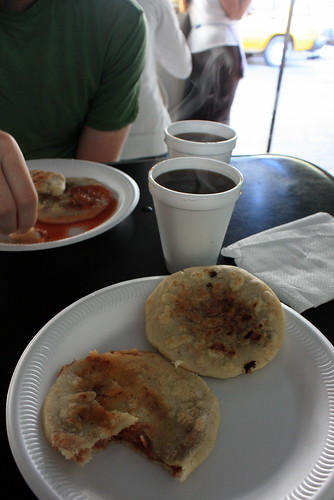
For those of you thinking of possibly travelling to the region: Costs in USD
Accommodation - $25 for a private room in hostel
Restaurant meal - $2-4
Pupusas - $0.30-0.50
330ml Bottled Beer - $1
500ml Soft Drink - $0.75
1.5l Bottle of water - $0.80
Bus - $0.50 / hour
Until next time
Ryan y Jo
Photos: http://www.flickr.com/photos/dojo77/